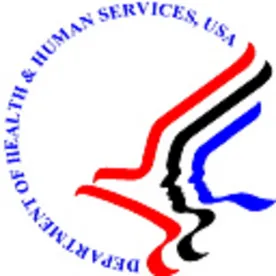As you know, we have been parsing through the HHS rules that finalize important changes to the Anti-Kickback Statute (AKS) and Physician Self-Referral Law (Stark Law) regulations. To recap, our team provided an overview of these historic changes before diving into new rules regarding beneficiary inducement and value-based arrangements. We’ve also provided two comparison charts – one on the AKS and the Beneficiary Inducements CMP and another on the Stark Law – that offer an easy-to-read comparison between the current, proposed, and final regulations.
Today, we are taking a look at changes to existing AKS safe harbors and Stark Law exceptions, and, an extra add-on: a new Stark Exception for Limited Remuneration to a Physician. Note that we plan to cover changes to the safe harbor and exception for donations of electronic health records items and services in a separate post, along with the new safe harbor and exception for donations of cybersecurity technology.
Personal Services and Management Contracts and Outcomes-Based Payment Arrangements Safe Harbor
A particularly welcome change is the OIG’s decision to more closely align this safe harbor with the personal service arrangements exception to the Stark Law, which should alleviate some of the difficulties associated with fully satisfying this safe harbor. First, the safe harbor will no longer require aggregate compensation to be set in advance and instead require only that the methodology for determining compensation to be set in advance. This change allows an arrangement to comply even if the compensation is set on a per-unit or an hourly basis, which are typical compensation mechanisms already permitted under the Stark Law. To mitigate against the risk of parties periodically adjusting the compensation as a reward for referrals, the compensation methodology must be set in advance, and, of course, compensation must still be fair market value, commercially reasonable, and not take into account the volume or value of referrals or other business generated between the parties.
Second, the OIG eliminated the requirement that, if services are to be provided on a periodic, sporadic, or part-time basis, the agreement must specify the schedule, length, and the exact charge for such intervals. Satisfying this requirement has always presented difficulty because contracting parties often need part-time services on an as-needed basis. However, the OIG has had a long-standing concern that part-time arrangements are vulnerable to abuse because they can be easily modified based on referral patterns. This change reflects the OIG’s position that existing safeguards (e.g., compensation methodology set in advance at fair market value and commercially reasonable) are sufficient to protect against fraud and abuse.
Third, in response to the many new value-based payment models, the OIG added regulations protecting outcomes-based payment arrangements to this safe harbor, but the utility remains to be seen given that the requirements appear to be onerous. Differing slightly from what was proposed, the final rule requires outcome measures to be used to quantify quality improvements, reductions in payor costs, or both. It also excludes payments made by pharmaceutical manufacturers, distributors, or wholesalers, PBMs, laboratories, compounding pharmacies, certain device manufacturers, distributors or wholesalers, and DME suppliers.
Warranties Safe Harbor
The final rule extends safe harbor protection to warranties for bundled items and related services, as long as certain conditions are met, rather than requiring the warranty to be tied to one single item. The rules clarify that a warranty may extend for multiple years, and more than one price reduction is permitted. The final rule does not, however, adopt the proposal that the manufacturer or supplier report price reductions as part of the warranty on the invoice or statement submitted to the buyer. For details regarding the additional requirements for bundled payments and the history of these changes, see our discussion on the 2019 proposed rules.
Rental of Office Space and Rental Equipment Exceptions
CMS made slight changes to these Stark Law exceptions to clarify that they do not prohibit multiple lessees from using the space or equipment or prevent a lessee from inviting another party other than the lessor to use the office space or equipment rented by the lessee. Providers should welcome these modifications because many previously believed the exceptions prohibited the lessee from sharing the space or equipment with any other party, which was problematic because multiple physicians typically use the same space or equipment at the same time when treating patients.
Physician Recruitment Exception
CMS finalized rules modifying the signature requirements in connection with the exception for physician recruitment. Currently, the exception requires a writing that is signed by all parties, including the recruiting hospital, the recruited physician, and the physician practice that the physician will be joining, if applicable. Under the new rules, CMS only requires the physician practice to sign the writing documenting the recruitment arrangement if the remuneration is provided indirectly to the physician through payments made to the physician practice, and the physician practice does not pass directly through to the physician all of the remuneration from the hospital. However, the recruited physician’s signature is still required, which is often the missing signature that trips up health care entities.
Remuneration Unrelated to the Provision of Designated Health Services Exception
Under this exception, remuneration provided by a hospital to a physician does not violate the Stark Law if the remuneration does not relate to the furnishing of DHS. This exception has limited application because remuneration must be “wholly unrelated” to the provision of DHS. One of the few examples CMS historically provided of remuneration that could be protected under this exception is payments from a hospital to a physician for the rental of residential property. CMS proposed to make certain modifications to the exception in order to broaden its application, but it declined to implement these changes in the final rule. This exception therefore remains the same.
Payments by a Physician Exception
This seemingly broad statutory exception protects payments by a physician to a laboratory in exchange for the provision of laboratory services, or payment at fair market value to an entity as compensation for other items or services. While the first alternative remains unchanged, CMS substantially narrowed the second by allowing its application only if the arrangement does not fit in any of the exceptions in 42 C.F.R. 411.357(a)-(h), which limits the utility of this exception. Stakeholders have long argued that this interpretation of a statutory exception is impractical.
Fair Market Value Compensation Exception
The fair market value compensation exception is used to protect arrangements that do not fit within other exceptions, often because it places no time limit on the parties’ arrangement. For example, a laboratory may wish to retain a physician to speak once at an educational event, and in this situation the parties may prefer not to have an agreement that lasts for a year or more.
Historically, CMS prohibited application of the exception to the rental of office space, but it reversed course in the final rule for arrangements that do not involve compensation based on (i) a percentage of the revenue attributable to the services performed or business generated in the office space; or (ii) per-unit of service rental charges, where the charges reflect services provided to patients referred by the lessor to the lessee. The same limitations already apply to equipment rentals. Parties can now rely upon this exception to cover a short-term rental of office space. Renewals are permitted, but the parties may not enter into more than one arrangement during the course of the year for the same items, services, office space, or equipment.
Assistance to Compensate a Nonphysician Practitioner Exception
This exception protects remuneration provided by a hospital to a physician to compensate a nonphysician practitioner (NPP) to provide “patient care services” if the NPP has not practiced in the geographical area served by the hospital within one year of the start of the compensation arrangement. Previously, the use of the term “patient care services” caused confusion because it is a defined term that relates to tasks performed only by physicians. CMS finalized changes to clarify this exception by replacing references to “patient care services” with “NPP patient care services.” CMS also replaced the term “practiced” with “furnished NPP patient care services” to clarify that other types of health care services do not impact the one year restriction. Lastly, CMS added a requirement that the compensation arrangement between the NPP and the physician or physician organization would be required to commence on or after the commencement of the compensation arrangement between the hospital and physician.
New Stark Exception: Limited Remuneration to a Physician
While the new exception for limited remuneration provided to a physician is flexible in that it does not require a written agreement or compensation that is set in advance, it only allows for payments for services actually provided by the physician (or through certain individuals or entities) that do not exceed $5,000 in the aggregate per calendar year, as adjusted for inflation. This exception will likely be used by parties who have historically relied upon the isolated financial transaction exception to make a single payment for multiple services without a written agreement. CMS provided an example in which a hospital’s medical director resigns unexpectedly, and the hospital quickly arranges for a new medical director who starts performing services before a written agreement is drafted or the compensation is set. If the aggregate compensation provided to the new medical director does not exceed the annual limit, the parties could rely upon this exception if all other conditions are met. This exception also may protect space or equipment lease payments as long as the payments are not per-unit of service charges or based on a percentage of revenue.
There is a lot to digest in the new rules! Stay tuned for additional in-depth analyses.






 />i
/>i

